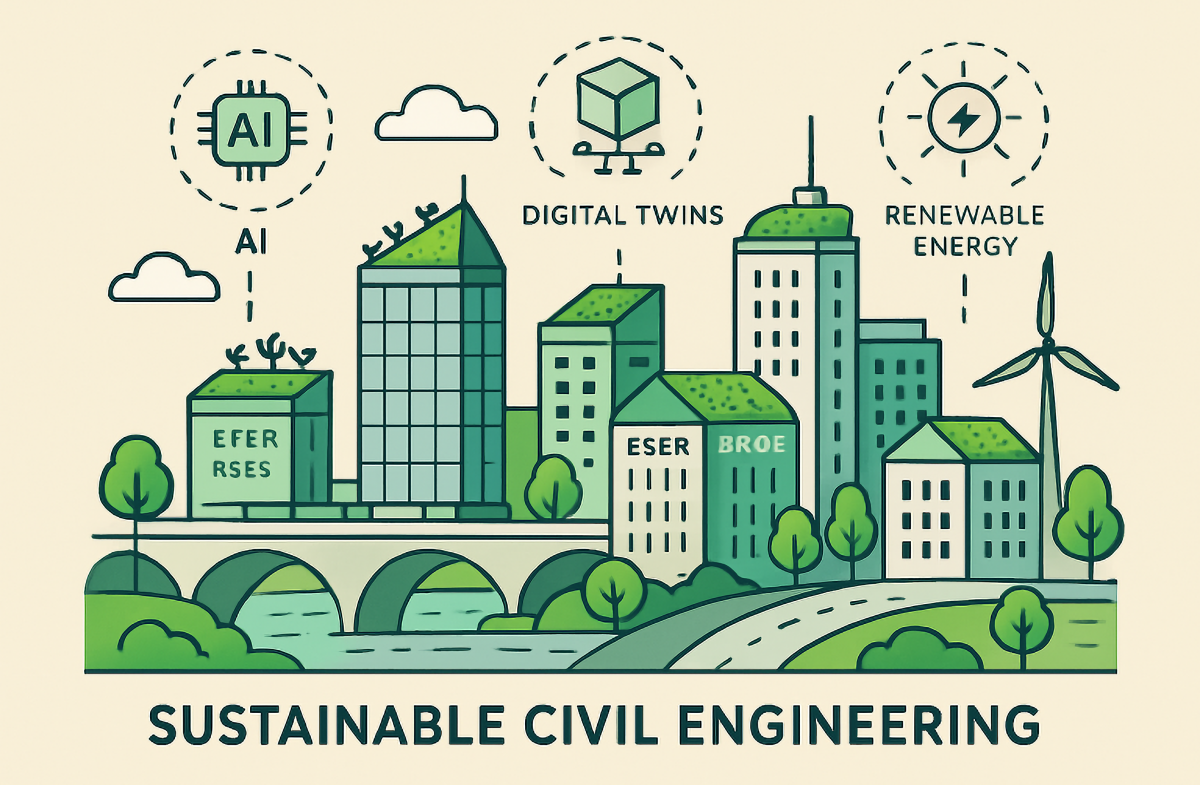Key Takeaways
- Emerging construction materials like carbon concrete and geopolymers are shrinking the industry’s carbon footprint.
- Technologies such as digital twins and AI are revolutionizing the planning and maintenance of infrastructure.
- Academic programs are producing engineers well-versed in sustainable construction.
Introduction
Civil engineering is playing a crucial role in addressing environmental challenges through sustainable design and innovation. As cities grow and climate concerns rise, advancements in materials, technology, and education are transforming how we build for the future. As urban resilience increases, civil engineering services in Washington, DC are increasingly turning to firms that prioritize sustainable methods. Sustainable civil engineering is a necessary evolution that integrates eco-friendly materials, digital process optimization, and responsible planning into everyday practice. As regulatory pressures and societal expectations rise, professionals are finding innovative ways to minimize ecological impact while meeting the infrastructure needs of growing populations.
Innovative Materials Redefining Construction
Construction materials significantly impact a project’s environmental footprint. Carbon concrete, a stronger and lighter alternative to steel, reduces steel demand and increases structural longevity. Geopolymers, a substitute for traditional Portland cement, generate up to 80% less carbon dioxide, offering a solution for minimizing emissions while achieving durability and chemical resistance. These innovations highlight a larger civil engineering movement to rethink construction fundamentals, allowing professionals to build infrastructure that meets engineering requirements and reduces the burden on natural resources. Breakthroughs in these materials are rapidly transforming from the lab to real-world project sites.
Digital Twins and AI: Transforming Infrastructure
The digital transformation of infrastructure is enabling engineers to design, monitor, and maintain projects with unprecedented precision. Digital twins, detailed virtual models of physical assets, simulate operational performance, anticipate maintenance needs, and optimize resource use in real-time. AI-powered software is revolutionizing front-end planning and ongoing maintenance, generating sustainable designs using data from countless scenarios. This approach reduces material waste, accelerates project timelines, and lowers lifecycle emissions. These tools are expected to become industry-standard as stakeholders seek smarter, more adaptive infrastructure solutions.
Educational Initiatives for Sustainable Engineering
Educational institutions are adapting curricula to incorporate sustainable design into civil engineering. Programs like the MSc in Sustainable Structural Engineering at University College London and Stanford’s Sustainable Architecture+Engineering major teach students environmental analysis, green materials science, and life-cycle assessment. These degrees prepare future engineers to tackle contemporary challenges, understanding both technical requirements and broader ecological implications. By blending traditional engineering with sustainability-focused coursework, graduates are equipped with problem-solving skills and multidisciplinary insights for responsible design.
Challenges and Future Directions
Sustainable civil engineering faces challenges such as regulatory inconsistencies, higher upfront costs for innovative materials, and the need for universally accepted standards. To overcome these, collaboration between researchers, regulatory bodies, and industry practitioners is crucial. Investment in pilot projects, public policy evolution, and a focus on life-cycle are key. The civil engineering field is uniquely positioned to lead the charge towards more resilient, efficient, and environmentally responsible infrastructure. Engineers are demonstrating that sustainability and development can coexist, creating a better future for humanity and the planet.
